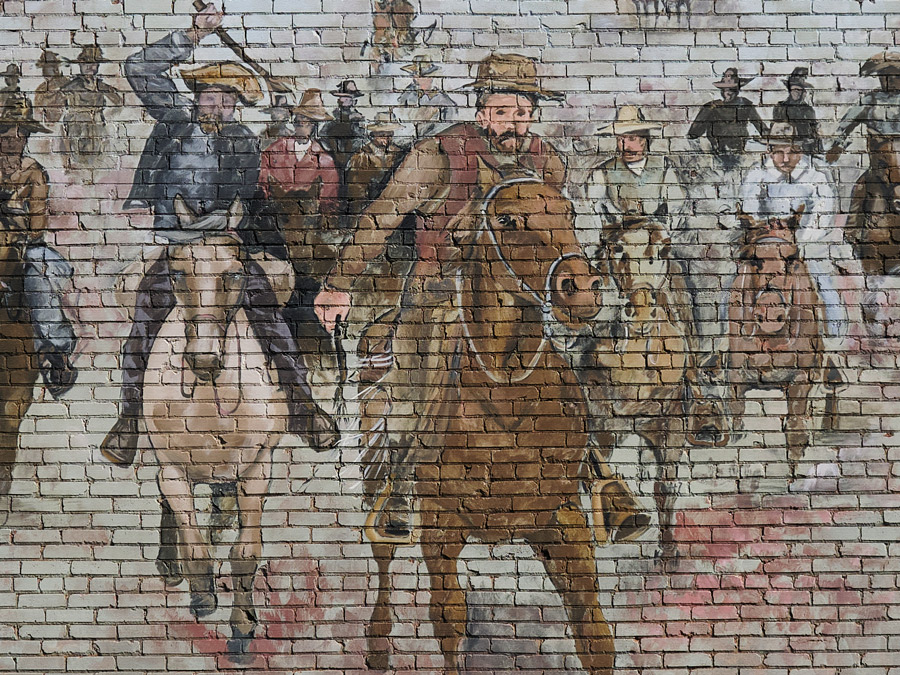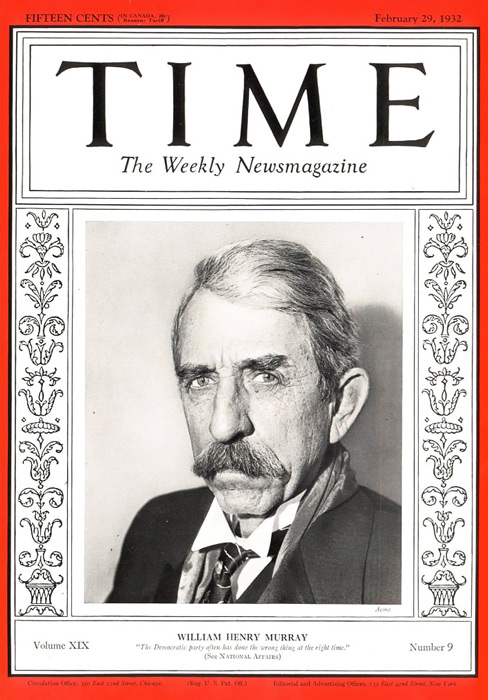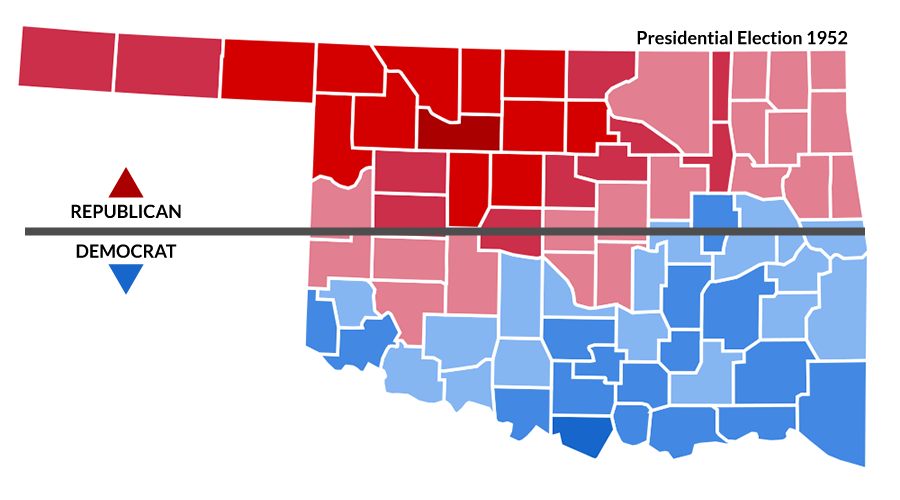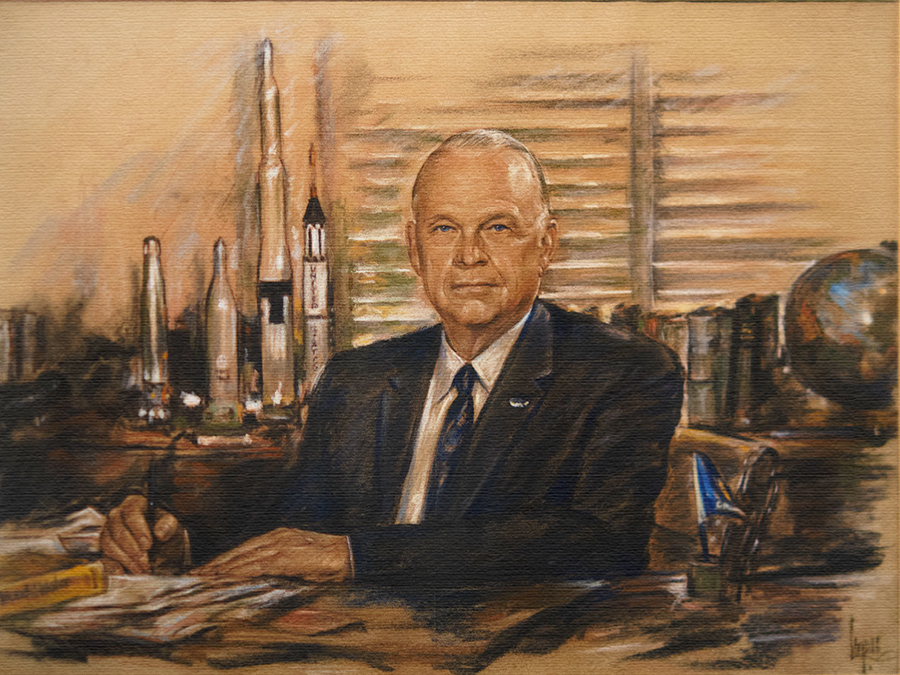The state of Oklahoma was formed by combining two territories, Oklahoma Territory and Indian Territory, to create a new state. Never before in American history had a territory not entered the Union as an independent state. It was originally anticipated that Indian Territory would become the State of Sequoyah and Oklahoma Territory would become the State of Oklahoma. However, politics intervened. The national administration, Republican at the time, feared the creation of two new states that would both likely elect two Democrat senators each. President Theodore Roosevelt brokered a compromise that would combine the two territories into a single state, thus sending only two new (Democrat) senators to Washington, and thus making less of an impact on the balance of power at the Capitol.

added to the American flag with Oklahoma's admission to the Union.
in Politics.
but that was just the beginning of our troubles.

In the long-term, of course, this had a great importance for Tulsa. If the State of Sequoyah had been created, Tulsa would have become its dominant urban center. At the time of statehood Muskogee was bigger than Tulsa and probably would have become the capital city of the new state. Muskogee was where the Constitutional Convention for the State of Sequoyah was held in 1905. Over time, of course, the oil boom in the Tulsa region would have placed us in a position of political and economic leadership in the State of Sequoyah, instead of the alienated relationship that we have had with the capital(s) of the State of Oklahoma. The relationship of Tulsa and state government would have been dramatically different in the State of Sequoyah, and this likely would have had a profound effect on Tulsa's cultural development.
It was not only the politics of party balance in Washington that affected Congress's decision to block the creation of the State of Sequoyah. Racism against native peoples also undoubtedly played a role. Turning "Indian Territory" into the "State of Sequoyah" would have created a state with a a large population of Native Americans. Maybe the people of the State of Sequoyah would have even elected Native Americans to represent them in the all-male, all-White United States Senate! It was much safer for the power establishment at the Capitol to combine Oklahoma Territory and Indian Territory into a single state, thus diluting the impact of Native American voters and guaranteeing a clear White majority among the new state's electorate.

We see this populism expressed very neatly in our state's constitution, the longest in the nation. The populist controlled majority that wrote the constitution feared that the interests of big money would dominate state politics and that the best protection against the mischief of these powerful forces was to write as many protections as possible in the constitution itself. Our constitution, for example, specifies the flash point for kerosene (widely used on farms). It also provided for one of the longest lists in the country of state officials to be directly elected at the ballot box. This was changed in the 1970's, but the provision was originally enacted to guarantee to citizens the right to pick the people who would regulate their interests rather than leaving these important posts to gubernatorial appointment, appointments that might be made by governors under the influence of the railroads and the bankers. The constitution also provided that changes to the constitution could only happen by a vote of the people themselves, thus insulating the protections contained in it from shady maneuvers at the State Capitol.
Oklahoma used to be thought of as a state dominated by Democrats, and indeed Democrats controlled state offices and held an overwhelming majority in the legislature up until relatively recently. Republicans, however, constituted a significant minority and occasionally won secondary offices or a U.S. Senate seat. Races were sometimes competitive, but Democrats almost always emerged as the winners.

Alfalfa Bill Murray, perhaps our state's most colorful political figures, was the only Oklahoman ever to appear on the cover of Time magazine while a resident of the state.
We can look back at the presidential election of 1952 as marking the beginning of Oklahoma’s shift to the Republican Party. In that year the Republican candidate, Dwight Eisenhower, received about the same percentage of the vote in Oklahoma as he received nationwide. This repeated in 1956. In 1960 the Democrats nominated John Kennedy, a Roman Catholic, and there was strong rejection of his candidacy by Oklahoma Protestants. His percentage of the vote in Oklahoma was far behind what he received nationwide.
In every presidential election since 1960 the Democratic candidate has run behind the party's national results, often significantly and sometimes dramatically. In time, the shift that began at the presidential election level began to began to be reflected in state and local races.
In 1962 Oklahoma elected a Republican as governor for the first time in the state's history. Today, of course, Republicans consistently win statewide elections and control the state legislature with a majority that equals what Democrats at one time enjoyed.

Tulsa, with many of its important leaders having come from Eastern states, was a strong base of support for the Republican Party in Oklahoma. In this sense, Tulsa shared the political origins of other northern Oklahoma counties. Because of Tulsa's economic importance and population size, its influence in the Republican Party remained highly significant in the state until well into the second half of Oklahoma history. Up until the 1970s or 80s, Tulsa was the “capital city” of the Oklahoma Republican Party. It was the capital city in the sense of being the largest and most important center of Republicanism in Oklahoma, and it was also the “capital” of the party in the sense that it was the place from which most of the party's funding came. Tulsa's role diluted as more Oklahomans switched to the Republican Party. The Republicanism of Tulsa was influenced by leaders whose roots were in northeastern American economic conservatism and old-fashioned “good government” values. As the party expanded and grew in Oklahoma, however, Tulsa’s influence declined and new registrants in the party tended to prioritize social conservatism.
Oklahoma’s transition from being a Democratic state to a Republican one is not altogether surprising. Oklahoma Democrats, mostly Southern in origin, tended to be conservative like Democrats in southern states. The white southern migration to the Republican Party following the civil rights legislation of the 1960s was mirrored in Oklahoma. Northern Oklahoma already had a strong Republican tradition, and the addition of the new adherents exiting the Democratic Party produced a solid Republican party majority in the state. Sen. Robert Kerr, a Democrat and former governor, was a powerful force in Oklahoma politics for many years. He was a conservative like most Democrats from the South (though orig. He was a very perceptive observer of Oklahoma political trends, and he predicted this political shift before his death on January 1, 1964.

Robert S. Kerr is an interesting example of political leaders in earlier Oklahoma, though he was certainly one of the most exceptional, and successful, of them. In many ways he mirrored the economic and cultural evolution of Oklahoma. He was born in humble circumstances but achieved wealth in the oil business. He began in politics as a supporter of Franklin D. Roosevelt's New Deal and ended up a conservative. Once he entered politics after first having built his business interests, his rise was rapid. He gained early national attention when he was selected by President Roosevelt as keynote speaker at the Democratic national convention in 1944, just two years after his election as Governor (his first public office). The New York Times's coverage of the speech praised his oratorical skills, saying the speech was delivered from "the eloquent lips of Gov. Kerr." He was elected to the Senate in 1948, and reelected twice after that. In Washington he gained a reputation as a talented dealmaker and became known as the "uncrowned king" of the Senate. "I'm opposed to any combine that I'm not in on," was one of his sayings. His wheeling and dealing in Washington was very beneficial for Oklahoma, of course. He is responsible for the Kerr-McClellan Arkansas River Navigation System that resulted in Tulsa becoming a port city, connected by water to New Orleans. The navigation system is just one example of his impacts on Oklahoma. Another important legacy is the Kerr Foundation in Oklahoma City, now headed by Lou Kerr, which is heavily involved in supporting educational activities.
One of the distinguishing characteristics of Oklahoma is that it is made up of six distinct cultural regions. It’s typical for states to have more than one identifiable cultural region (think of t Louisiana with its southern Catholic French region and its northern Protestant region or New York State with its upstate and downstate regions). Every state has multiple geographic distinctions ...but what is significant in Oklahoma, and different from most other states, is that we have six distinct cultural regions despite our relatively small population.
If we divide the state in half between the North and the South, we have two regions based on the settlement of the North by people from the northern part of the United States, and the South settled by people from southern states. That gives us two regions, but the eastern and western halves of these sections of the state are geographically and economically different. The North and South of Oklahoma may have originally been settled by pioneers who shared much in common, but, as people adapted to the nature of the land and and the economic possibilities of each region, natural adjustments evolved over time in cultural values and norms. This, then, gives us four cultural regions: the northern and southern halves of the eastern and western halves of the state.
Then we add Tulsa and Oklahoma City as additional cultural regions, both distinct from each other at the same time they are distinctly different from the rural parts of the state. Tulsa has a strong eastern American cultural influence. Oklahoma City, on the other hand, is representative of “western” American culture. We are a state with two major cities, each separated by 100 miles of highway and 1000 miles of cultural differences.
The two urban cultural areas plus the four non-urban ones gives us a total of six cultural regions that make up Oklahoma. The existence of six separate regions ...regions with conflicting priorities and values, all inside a state that is not heavily populated... has always undermined our state's ability to develop coherent and sustained public policies. In Oklahoma, "coming together" has always been difficult. It is likely to remain so. From one cultural region to another in Oklahoma the channels of communication between leadership groups are usually weak. This means that the leaders that influence public policy choices through their influence on public opinion (and through their relationships with elected officials) don't talk to each other as they should and don't even understand each other as they should. Without these leaders coming together to create state-wide consensuses on issues, it is difficult for real public policy progress to be made in Oklahoma.
(P.S. Organizations that work towards building communication bridges, like the Oklahoma Academy, do exist and are critically important, but they need broader and deeper support.)

Prof. Rodger Randle